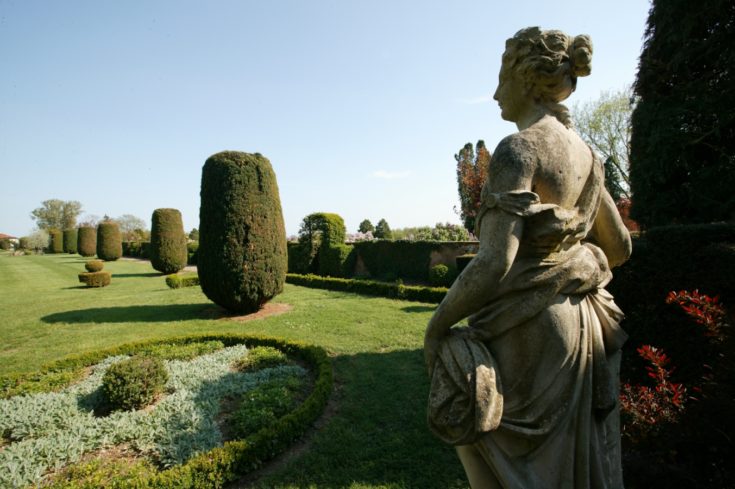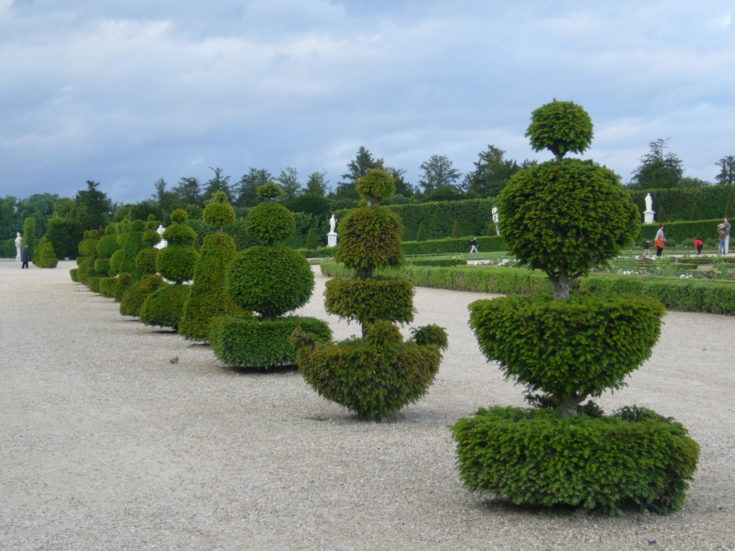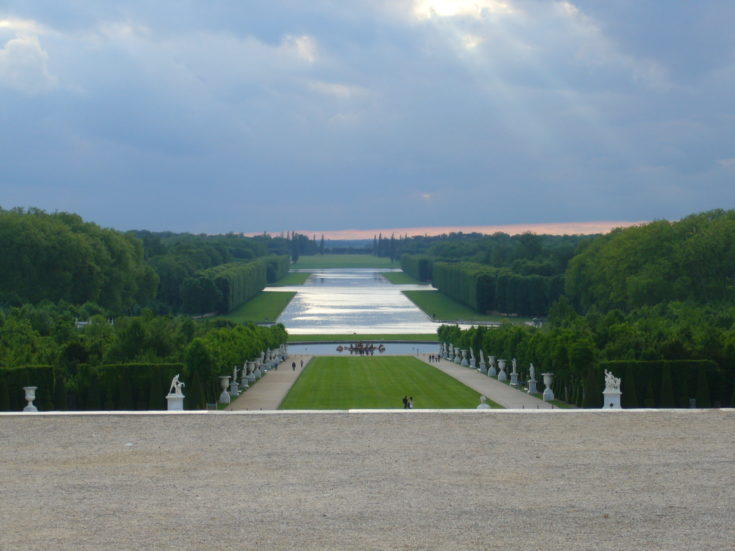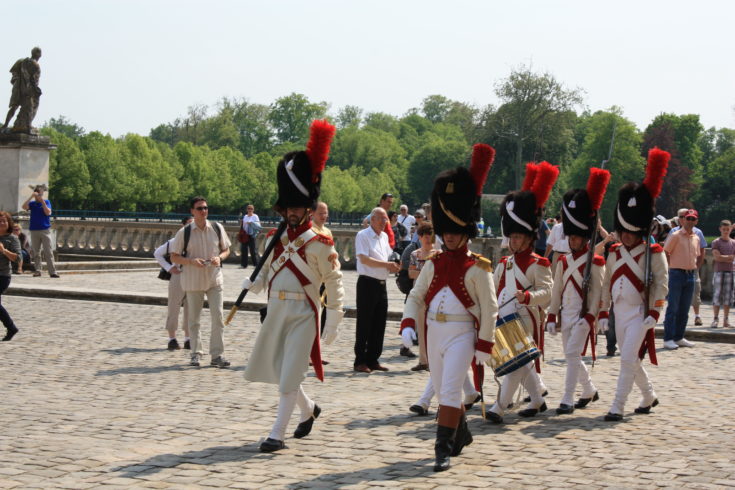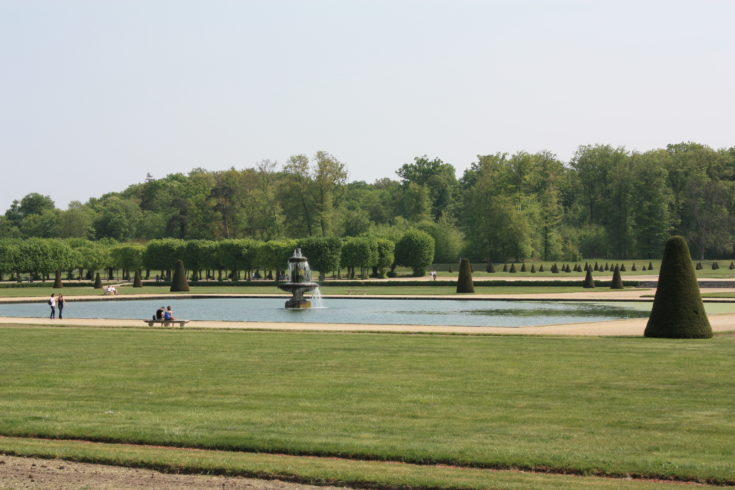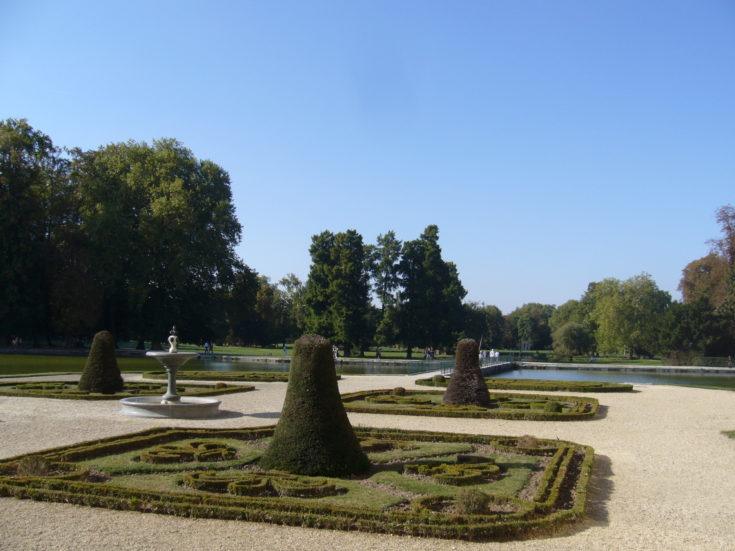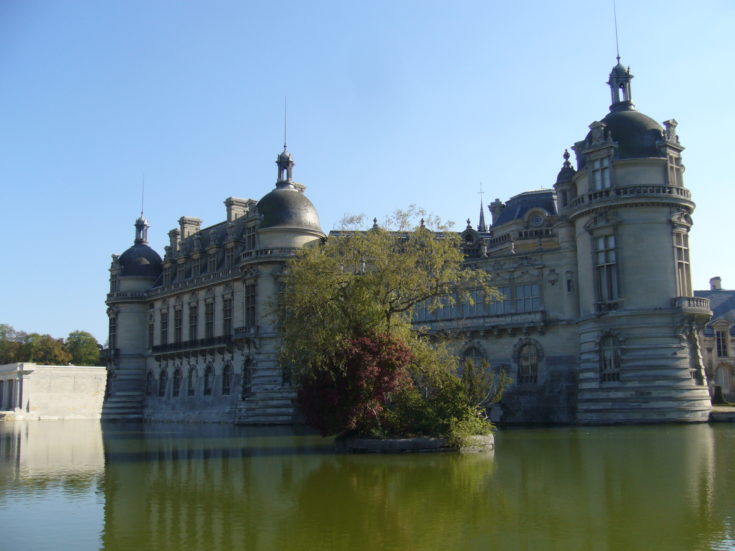The grand Versailles
The luxurious park surrounding the majestic royal palace was laid out in the 18th century by the celebrated landscape architect Lenôtre. The grounds now cover 900 hectares and include gardens, fountains, the small palaces of Versailles – the Grand and Petit Trianon – and the nearly two-kilometer-long Grand Canal.
The parks of Versailles are made in the French style, characterized by strict symmetry. Alleys of trees with neatly trimmed crowns stretch along the line, flower beds are arranged in the form of geometric ornaments, and the bowls of fountains and pools have an immaculately correct shape.
The pride of the park is its 1700 fountains. Some of them impress with their grandeur, such as Apollo’s or Neptune’s fountain, decorated with large-scale sculptural groups, while others are just small streams of water flowing into the bowl or beating in the bushes.
The Versailles Park is characterized by numerous bosquets, a kind of “green rooms” with densely planted trees as walls. These spaces, decorated with grottoes, gardens, pools and fountains, served for open-air festivities.
The palace gardens abound with sculptures, thanks to which the Versailles park can be safely called an open-air museum. Most of them are copies of ancient statues or representations of heroes of Greek and Roman mythology.
Practical information:
- Visitor access to the parks of Versailles depends on the season. From April to October they are open daily from 8 am to 8:30 pm, while from November to March they are open from 8 am to 6 pm. Access may be cut off due to unfavorable meteorological conditions (snow, strong winds).
- There is no charge to visit the park, except on days when the fountains are turned on (weekends, holidays) and there are musical performances.
- You can also rent a boat for a boat ride on the Grand Canal (30 minutes – 13 euros, 1 hour – 17 euros).
Charming Fontainebleau
The parks and gardens of Fontainebleau are inferior to those of Versailles. The estate is spread over 130 hectares, bordered to the south by the Fontainebleau Forest.
The park around the ancient royal castle was laid out in the XVI century, but over the centuries has been repeatedly rebuilt. The variety of garden styles is the main charm of Fontainebleau.
One of the most delightful parts of the park is the Garden of Diana. According to one version, it was named after Henry II’s lover, the charming Diana de Poitiers. In the center of this space is a fountain, which is decorated with a copy of an antique statue of Diana with a lion.
It is difficult to pass by the courtyard of the Source, which overlooks the shore of the Carp Pond, where huge fish and numerous ducks swim. The courtyard is adjoined by a square parterre designed in typical French style by the great André Lenôtre.
At the same time, nearby is the romantic English Garden, which is crossed by an artificial river. The garden was laid out in the early 19th century under Napoleon’s personal decree and supervision.
Practical information:
The parks and gardens of Fonteblo can be visited free of charge.
The park is open 24 hours a day, but the Courtyards and Gardens are open on a scheduled basis:
- November through February, they’re open 9 to 17;
- in March, April and October from 9 a.m. to 6 p.m;
- May through September, 9 a.m. to 7 p.m.
Diana’s Garden and the English Garden close half an hour and an hour before the specified time.
Harmonious Chantilly
The ancestral estate of the Princes of Condé, the majestic Château de Chantilly, is surrounded on all sides by a deep moat with water, as well as a magnificent park of over 115 hectares.
In the 17th century it was a magnificent French garden designed by Lenôtre, but it was almost completely destroyed during the Bourgeois Revolution. When the last members of the Condé family returned from exile, they decided to create an English landscape park with lawns, groves and hunting grounds.
The park impresses with its harmonious combination of water, greenery and granite. Canals, rivers and streams flow through the green areas, where swans, ducks and other waterfowl swim.
Among the most interesting places in the park are Love Island, where the Temple of Venus is built, as well as the “Village” – a few modest outside, but luxuriously decorated inside pavilions, which were built in the middle of the XVIII century as a place of retreat for the princes of Condé.
Practical information:
- To visit the park you need to buy an entrance ticket for 8 euros (in low season – November-March the ticket price is 5 euros).
- The park is open from 10:30 a.m. to 5/18 p.m. in low season and 10 a.m. to 6/20 p.m. in high season, every day except Tuesday.
- Each year the park is closed for the period January 8 through January 26.
In addition to the above-mentioned parks in the vicinity of Paris, you can visit the magnificent Vaux-le-Vicomte Park, Soe Park, Malmaison estate and others. It should be noted that getting to the country parks of the French capital is quite a difficult task. If you want to save energy and time, it is better to use a transfer with a Russian-speaking driver or go here with an excursion.
YOU MIGHT BE INTERESTED IN THIS:
- Transferts in Paris
- Private Paris City Tour
- Private Tour to Champagne
- Private Tour to Normandy
- Private Tour Loire Vallley Castles
- Private Tour Mont St Michel
- Private Tour to Bruges

